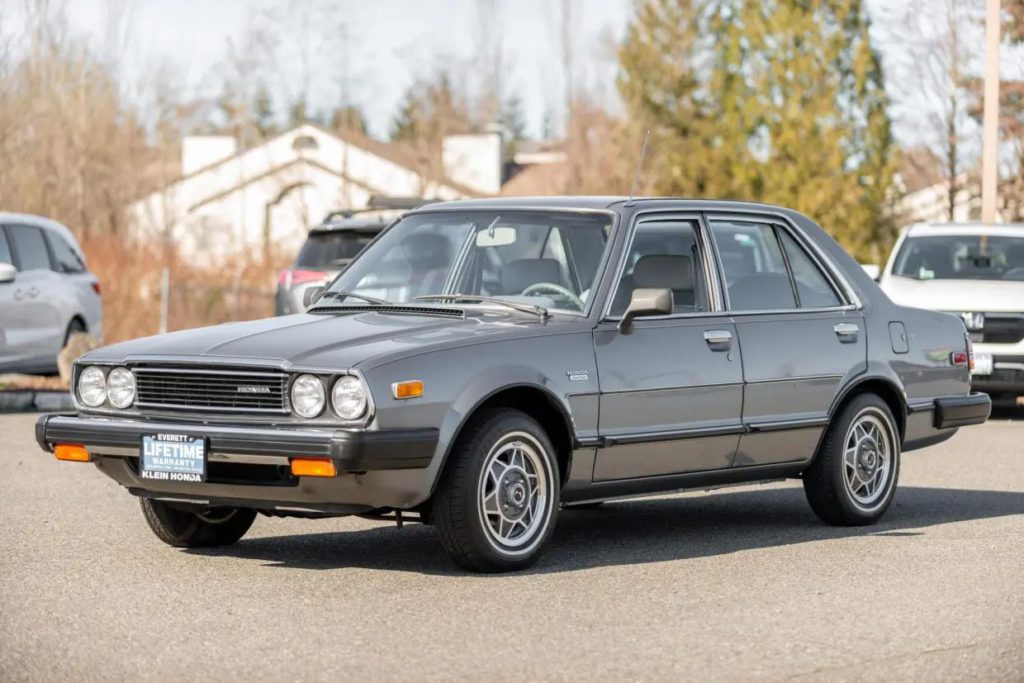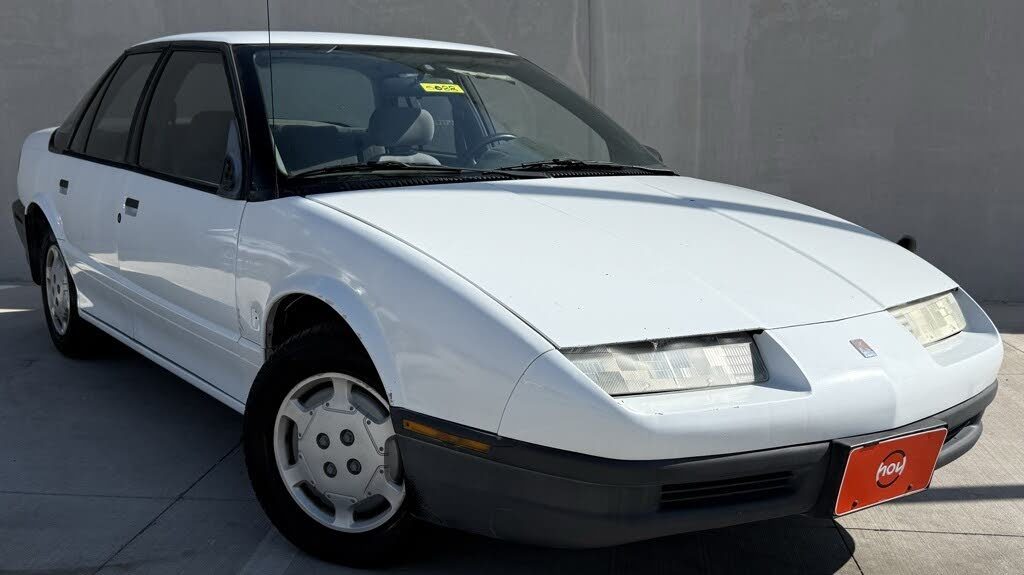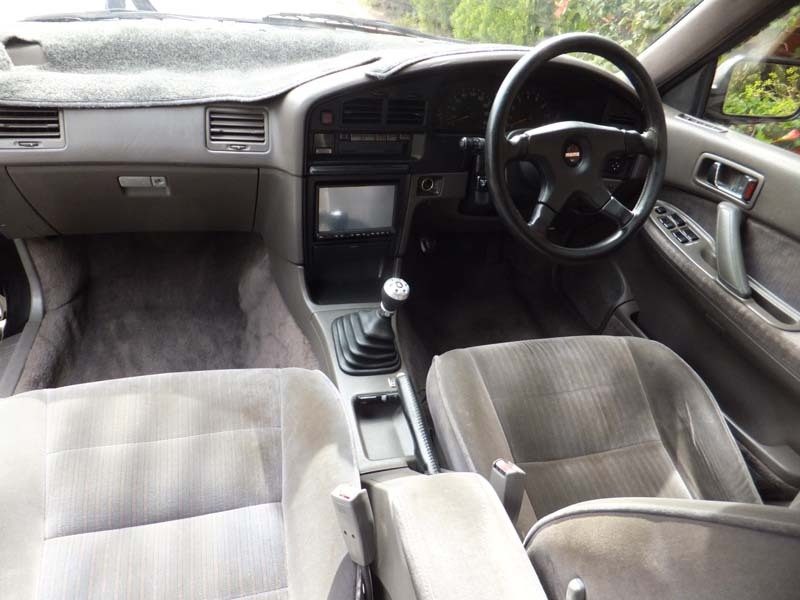Lamborghinis get magazine covers. Meanwhile, a 2005 Subaru Legacy GT just smoked a BMW at a red light and nobody noticed. Car enthusiasts obsess over badge prestige while brilliant engineering rolls through suburban parking lots completely invisible. These vehicles never made bedroom posters, never triggered Instagram envy. They just quietly solved problems you didn’t know existed while everyone else chased shiny objects.
10. Honda Accord: Continuous Excellence (Exterior)

Car and Driver’s 10 Best list. Thirty-eight times. That’s not luck—that’s relentless refinement masquerading as modesty. Early 1990s VTEC technology delivering performance and efficiency without compromise. Short-throw shifters making gear changes feel like precision machinery.
Honda Accord: Continuous Excellence (Interior)

Double wishbone suspension and aluminum subframes creating handling dynamics that punched above the Accord’s weight class. High-strength steel reducing mass while maintaining structural integrity decades before “lightweighting” became industry buzzword. The Accord demonstrates how small improvements compound into excellence over time. Automotive compound interest. The math works.
9. Volkswagen TDI: Efficiency Magic (While It Lasted) (Exterior)

Before lawyers ruined everything, VW’s TDI engines were efficiency wizardry. Mark V Jetta TDI cruising past 50 mpg while delivering 155 lb-ft of torque at 1900 RPM. Highway merging felt like commanding locomotives instead of begging for gaps.
Volkswagen TDI: Efficiency Magic (While It Lasted) (Interior)

Direct injection at 23,000 PSI. Forged steel bottom end. Variable geometry turbo eliminating lag across the entire rev range. These engines routinely crossed 300,000 miles without breaking stride. Mechanical fuel pumps added old-school reliability to modern tech. Corporate greed killed the whole program. TDI proved efficient transportation didn’t require suffering—until executives chose profits over honesty.
8. Chevrolet Astro Van: Functional Ugly (Exterior)

Beauty contest loser. Functionality champion. Truck-based underpinnings creating versatility modern crossovers still can’t match. Body-on-frame construction, 5,500-pound towing capacity, straddling work vehicle and family hauler duties with remarkable competence.
Chevrolet Astro Van: Functional Ugly (Interior)

4.3L V6—essentially a small-block V8 with two cylinders removed—delivering truck-like durability in an eight-passenger package. Barn door rear openings making everything from lumber loading to stroller storage effortless. The Astro prioritized function over fashion, creating vehicles capable of handling almost anything without complaint. Ugly? Absolutely. Unstoppable? Completely.
7. Ford Taurus SHO: Beige Subversion (Exterior)

Automotive wolf in suburban sheep clothing. Yamaha-designed 3.0L V6 screaming to 7,300 RPM like it was auditioning for Formula 1. 220 horsepower through a Mazda-sourced 5-speed manual. Sleeper status: legendary.
Ford Taurus SHO: Beige Subversion (Interior)

Stiffer suspension components, larger anti-roll bars helping the SHO pull 0.88g on the skid pad—sports car numbers in early-90s terms. Subtle exterior differences maintained stealth mode while owners surprised BMW drivers at traffic lights. The SHO proved American manufacturers could build world-class performance when they stopped fearing their own capabilities. Revolutionary disguised as ordinary.
6. Saturn S-Series: America’s Startup Dream (Exterior)

GM tried building cars like a Silicon Valley startup before anyone knew what that meant. Spring Hill, Tennessee became ground zero for dent-resistant polymer body panels that laughed at shopping cart impacts. No rust, no dents, no traditional dealership torture.
Saturn S-Series: America’s Startup Dream (Interior)

The 1.9L twin-cam wasn’t setting drag strips ablaze, but Saturn’s no-haggle pricing eliminated psychological warfare from car buying. Lost foam casting showed American manufacturing could still innovate when corporate bureaucracy stepped aside. Saturn represented Detroit’s road not taken—bold ideas strangled by quarterly earnings worship. The experiment died young. Corporate America learned nothing.
5. Mazda 626: Economy Car Rebellion (Exterior)

Economy cars were supposed to bore you into submission. Mazda’s engineers apparently missed that memo entirely. Four-wheel steering in a family sedan—rear wheels angling 5 degrees for enhanced agility. Supercars would steal this tech later and charge ten times more.
Mazda 626: Economy Car Rebellion (Interior)

Multi-link rear suspension transformed every grocery run into driving education you actually wanted. The 2.5L V6 with variable intake timing pumped out 164 horsepower in 1993 when most cars drove like agricultural equipment. This platform later underpinned the Ford Probe. That alone tells you everything about its engineering excellence. The 626 proved “affordable” and “engaging” weren’t mutually exclusive concepts.
4. Volvo 240: Swedish Safety Engineering (Exterior)

Door closes with bank vault authority. Message received: survival first, everything else negotiable. High-strength Swedish steel creating advanced crumple zones when competitors were still mastering basic seatbelt installation.
Volvo 240: Swedish Safety Engineering (Interior)

B23 4-cylinder featuring forged internals and gear-driven cam. Many 240s surpass half a million miles without major surgery. Seats designed with orthopedic surgeon input supporting all-day driving without chiropractor bills afterward. Heating systems laughing at Scandinavian winters while most cars surrender at first frost. The 240 prioritized occupant protection decades before crash test ratings became marketing tools. Swedish pragmatism at its finest.
3. Toyota Camry: Reliability Redefined (Exterior)

The Camry became boring because it made everything else look broken. Toyota’s actual achievement: creating vehicles so fundamentally sound they redefined consumer expectations. Tight panel gaps when American cars still rattled apart during warranty periods.
Toyota Camry: Reliability Redefined (Interior)

Later V6 models hitting 60 mph in 7.2 seconds while engineered to outlast mortgage payments. The Camry forced every manufacturer to raise their game or surrender market share. Not glamorous. Completely revolutionary in the most practical way imaginable. Sometimes the biggest innovation involves making things work properly for once. Revolutionary concept, apparently.
2. Pontiac G8: Australian Muscle Immigration (Exterior)

Automotive arbitrage at its finest. Pontiac imported Australia’s Holden Commodore while American muscle cars forgot how to navigate corners without plowing into ditches. Rear-wheel drive, 6.0L V8 pushing 361 horsepower, zero to 60 in 5.2 seconds. Room for five adults plus their Costco haul.
Pontiac G8: Australian Muscle Immigration (Interior)

The GXP variant borrowed the Corvette’s 6.2L LS3 V8—415 horsepower in a family sedan that embarrassed dedicated sports cars while fitting your entire life in the trunk. Independent rear suspension, clean interior design minus the usual GM plastic fantastic. American performance finally remembered how to evolve beyond 1970. Now they’re collector cars because of course they are.
1. Subaru Legacy GT: The Sleeper That Never Sleeps (Exterior)

Soccer mom exterior hiding a 2.5L turbocharged flat-four. 243 horsepower channeled through Subaru’s symmetrical all-wheel drive system. This thing grips asphalt like desperation.
Subaru Legacy GT: The Sleeper That Never Sleeps (Interior)

Zero to 60 in 5.7 seconds. Cars costing double take longer while looking three times more dramatic. MacPherson struts up front, multi-link rear suspension delivering that rare balance where Saturday canyon runs don’t require Monday chiropractor visits. Most performance cars force brutal choices between speed and daily sanity. The Legacy GT said “why choose?” and built both into the same anonymous sedan. Pure automotive camouflage.